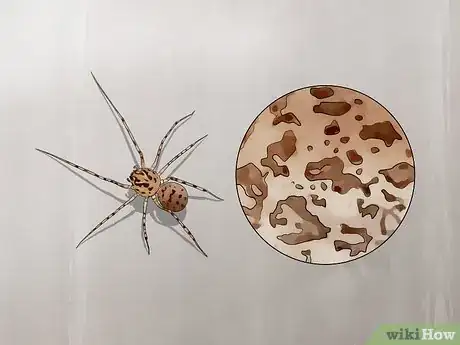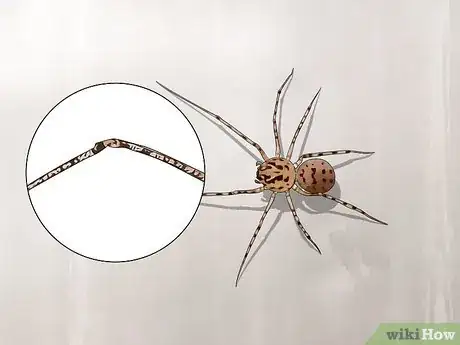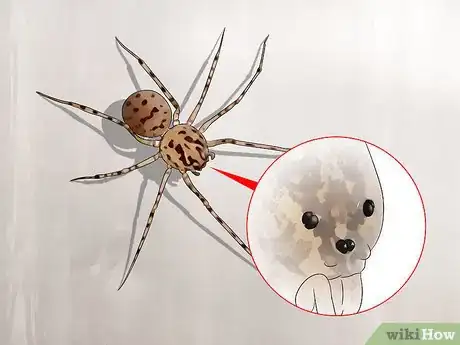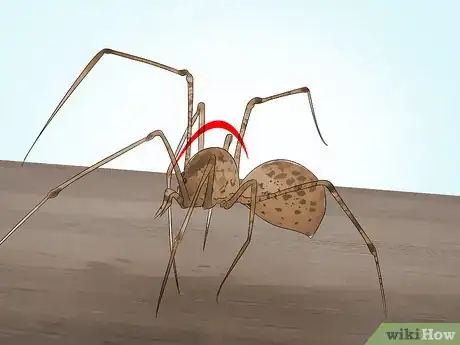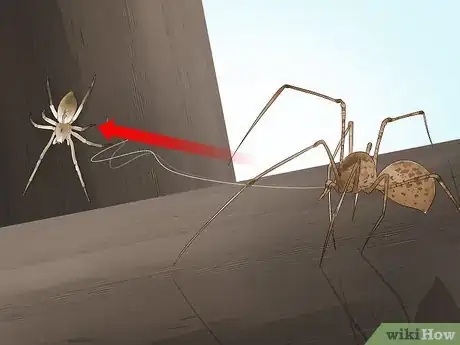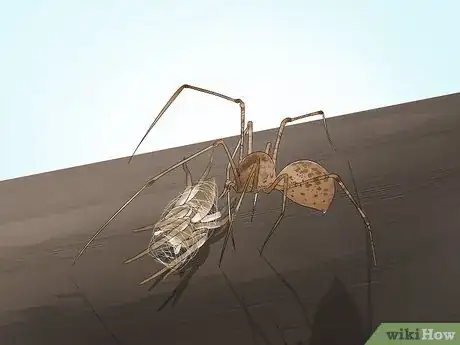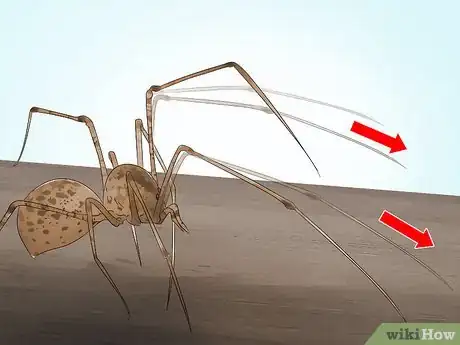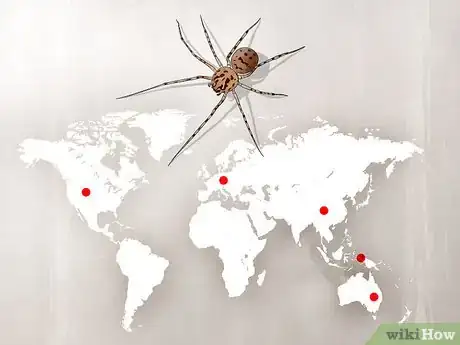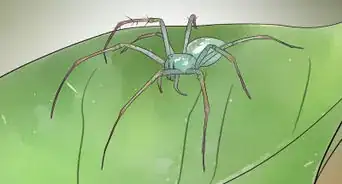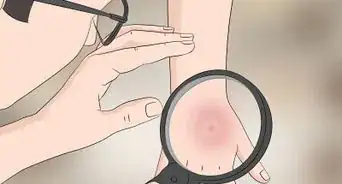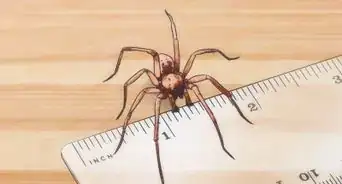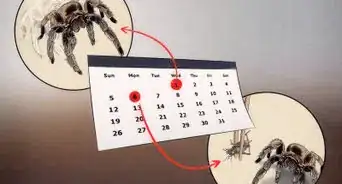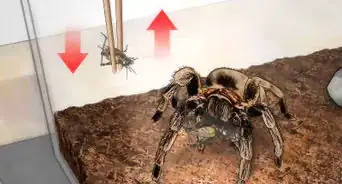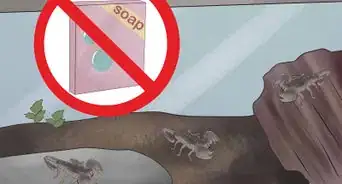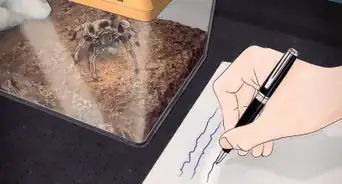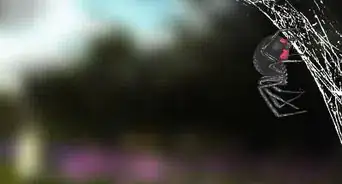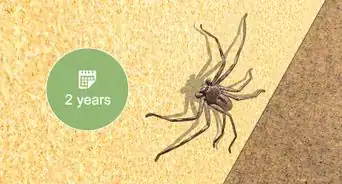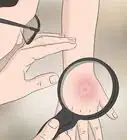This article was co-authored by wikiHow Staff. Our trained team of editors and researchers validate articles for accuracy and comprehensiveness. wikiHow's Content Management Team carefully monitors the work from our editorial staff to ensure that each article is backed by trusted research and meets our high quality standards.
wikiHow marks an article as reader-approved once it receives enough positive feedback. In this case, several readers have written to tell us that this article was helpful to them, earning it our reader-approved status.
This article has been viewed 71,914 times.
Learn more...
Spitting spiders are named for their cool way of catching prey: spraying the prey with a venomous glue, or “spit.” Spitting spiders are found all over the world, from North America to Australia. If you’re trying to identify a spitting spider, you should keep an eye out for their characteristic body shape, patterning, and spitting, of course! Knowing where to find these critters can help identify them, too.
Steps
Looking for Characteristic Traits
-
1Examine body color and patterning. Look for a light, creamy brown body with dark brown speckles.[1] On the cephalothorax, or front segment of the body, you should see a dark brown pattern that looks a bit like a lyre, which is a type of stringed instrument.[2]
- Don’t worry if you’re not sure what a lyre is. Look it up online to get a better idea of the spitting spider patterning.
-
2Assess body size. Adult female spitting spiders have a body length of about four to six mm, not counting their legs. Adult males have bodies that are three to five mm long.[3]Advertisement
-
3Check for skinny, spineless legs. Spitting spiders have skinny, pale legs without any obvious spines. Their legs have dark brown or black bands.[4]
- The tips of the legs have three tiny claws, called tarsi. If you can get close enough, check for these.
- The spitting spider’s legs are so long and gangly that it sometimes looks like it’s walking on stilts![5]
-
4Look for three pairs of eyes. Spitting spiders have three pairs of eyes, for a total of six eyes. Two pairs are arranged across from each other, and the other pair is placed between them and a little lower on the spider's face.[6]
-
5Keep an eye out for a dome-shaped cephalothorax. The segment closest to the head, known as the cephalothorax, is narrowest near the head and slopes upwards towards the back, creating a dome-like shape.[7]
- The two body segments, known as the cephalothorax and the abdomen, pretty close in size. The cephalothorax is usually a little bigger.
- Here’s a fun fact: the cephalothorax is where the spitting spider stores its trademark “spit”!
Observing Spitting Spider Behavior
-
1Look for spitting on prey. Spitting spiders catch their prey by trapping them with their gluey, venomous “spit,” which they expel from their fangs. They cover their prey in overlapping bands of spit to pin the insect to the ground.[8]
- The spitting spider bobs its head from side to side as it spits.[9]
-
2Observe the spider wrap its prey in silk. Spitting spider “spit” paralyzes an insect. Once it has sprayed the prey, the spitting spider will hold the prey in its third legs and wrap it up in silk, like a tiny mummy. Then, it’s time to feast![10]
- The spitting spider will consume its meal on the spot, rather than taking the prey back to its lair like other types of spiders.[11]
-
3Watch for their characteristic walk. Spitting spiders are pretty blind, so they’ll often walk with their front legs held up so they can sense their environment. Their front legs have lots of sensory receptors called setae, which allow them to “see” what’s around them. Pretty cool, right?[12]
Knowing Where to Find Spitting Spiders
-
1Learn the regions where spitting spiders are found. Spitting spiders are found all over the place! They’ve been seen in North America, Europe, Asia, Australia, and the Pacific Islands, but they may be found in other places, too.[13]
- Check out this website for a list of US states and Canadian provinces where you can find the spitting spider: http://www.spiders.us/species/scytodes-thoracica/.
- Spitting spiders are unique little guys because they don’t build webs! However, they might put down a little silk around their daytime hangout.
-
2Look for spitting spiders in buildings. Spitting spiders usually live in and around homes and other buildings. They love cool, dark places, so check basements, closets, and dark corners.[14]
- Sometimes, spitting spiders will hang out under rocks or leaves near homes, too.
- Spitting spiders are also found in temperate forests.[15]
-
3Know the best time of day and year to find them. Spitting spiders are most often seen in the summer and fall--this is when they lay eggs and mate. They’re nocturnal, so nighttime is the best time for sightings.[16]
Community Q&A
-
QuestionWill I feel if the spit of a spitting spider got on me?
 Community AnswerIt depends on the spit. If the spit is weak, it would feel like a drop of water; if it's strong, it may feel like a fire-ant bite.
Community AnswerIt depends on the spit. If the spit is weak, it would feel like a drop of water; if it's strong, it may feel like a fire-ant bite. -
QuestionWhat does their web typically look like?
 MakkellyCommunity AnswerIt looks like thread spun in a unique pattern.
MakkellyCommunity AnswerIt looks like thread spun in a unique pattern. -
QuestionWhat predators do spiders have?
 Community AnswerEssentially, anything bigger than a spider is a predator.
Community AnswerEssentially, anything bigger than a spider is a predator.
Warnings
- It isn’t advisable to kill a spitting spider in your home because they consume prey, such as flies and mosquitoes, that are bothersome. The spitting spider is not poisonous and cannot bite you.⧼thumbs_response⧽
References
- ↑ http://www.uksafari.com/spittingspiders.htm
- ↑ http://www.spiders.us/species/scytodes-thoracica/
- ↑ http://www.spiders.us/species/scytodes-thoracica/
- ↑ http://www.spiders.us/species/scytodes-thoracica/
- ↑ https://www.insectidentification.org/insect-description.php?identification=Spitting-Spider
- ↑ http://www.spiders.us/species/scytodes-thoracica/
- ↑ http://www.spiders.us/species/scytodes-thoracica/
- ↑ http://animaldiversity.org/accounts/Scytodes_thoracica/
- ↑ https://www.insectidentification.org/insect-description.php?identification=Spitting-Spider
- ↑ http://animaldiversity.org/accounts/Scytodes_thoracica/
- ↑ https://www.insectidentification.org/insect-description.php?identification=Spitting-Spider
- ↑ http://animaldiversity.org/accounts/Scytodes_thoracica/
- ↑ http://www.spiders.us/species/scytodes-thoracica/
- ↑ http://www.spiders.us/species/scytodes-thoracica/
- ↑ http://animaldiversity.org/accounts/Scytodes_thoracica/
- ↑ http://www.spiders.us/species/scytodes-thoracica/
About This Article
To identify a spitting spider, look for its characteristic creamy brown body with dark brown speckles. You can also check if its legs are skinny, spineless, and match the colors on its back. When it walks, see if it holds its front legs up, since spitting spiders use them to see better. If you can see its eyes, check if there are 6 of them in a triangle formation, like spitting spiders have. You can also identify the spitting spider by the spitting behavior it uses to hunt smaller insects. For more tips, including including how to find spitting spiders, read on!
